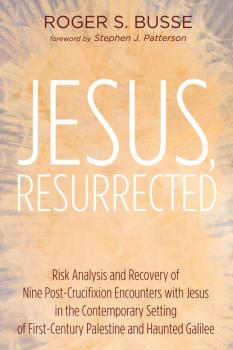Roger S. Busse
Список книг автора Roger S. BusseThe Enemies of Paul: Demons, Satan, Betrayers, and Apostles
Paul's conflict with viscous enemies, human and otherwise, led him to employ efficacious powers, charismata (charismatic powers), and controversial and sometimes illegal practices that are only coherent when placed in context of the first century Hellenistic-Roman world. These included soul and spirit transportation, possession, and exorcisms, special techniques to repel demonic attack, as well as what was considered the darkest of black magic in the ancient world–the casting of death curses, which called on Satan to infect, harm, and even kill his enemies. All of these can be recovered in striking detail using risk analysis of his undisputed writings and comparing them with contemporary sources, papyri, and documents independent of the New Testament. The results demonstrate that Paul's letters are so much more than simply intellectual and rhetorical correspondences–they are infused with dangerous mystical and charismatic powers feared in an ancient world that was saturated with prevalent, active dark forces and multi-layered human and supernatural conflicts; of angels and demons at war; of charismata and anathemata (deadly curses); and Paul's expectation of the hemera kuriou, «Day of the Lord,» that would defeat Satan and the curse of death via pistis (faith) in the efficacious euangelion (gospel) of agape (love).
Jesus, Resurrected
How would ancients, particularly Jesus' enemies, have understood what he was doing in his exorcisms–the mechanisms, the techniques, and the outcomes? And why would anyone have risked associating with a man thought possessed by Beelzebul and engaged in illegal, shadowy, even disreputable activity? The result is an engaging and enlightening read of the Jesus tradition in its contemporary setting that is sure to surprise, and perhaps even delight the reader whose mind is open to new ideas and able to handle the subtleties of cross cultural exploration. Why was Jesus labeled a dark magician, an «evildoer?» Why did he use illegal practices to expel demons? Why was he crucified and not stoned, stabbed, or beheaded like other Roman antagonists, such as John the Baptist? Why was his body entombed in stone and not thrown into the city dump? Most important, why would anyone accept the perilous risk of admitting to have seen this condemned dark magician after crucifixion, and then proclaim him «master?» Roger Busse, a forty-year veteran of risk analysis and graduate of Harvard Divinity School, carefully analyzes these questions and the post-crucifixion encounters with Jesus in their contemporary setting, recovering nine highly reliable encounters.
To Be Near the Fire
Virtually all scholars agree that Jesus did one very risky thing: he exorcised demons. Exorcism was an illicit activity in the Roman world, so why would Jesus risk condemnation, arrest, and even death for the sake of the demon-possessed? Some point to his compassion. Roger Busse, a thirty-nine-year veteran of risk analysis and a graduate of Harvard Divinity School, has another answer from the world in which he lives: risk assessment. People engage in risky ventures only when not doing so would pose even greater risks. What was the greater risk for Jesus? He believed that his land and home, then suffering under foreign occupation, was filled with demons. He believed that if he did not drive them off, all might be lost and the forces of darkness might win out, leaving only the kingdom of Satan. Given this context, Busse reassesses the gospel traditions. Using risk analysis, Busse provides a new approach that recovers the specific charismatic practices, sayings, and parables that the exorcist Jesus' employed in his deliberate and dangerous strategy to drive Satan from the land and reestablish the kingdom of God. To Be Near the Fire offers a new portrait of Jesus and the origins of Christianity.


